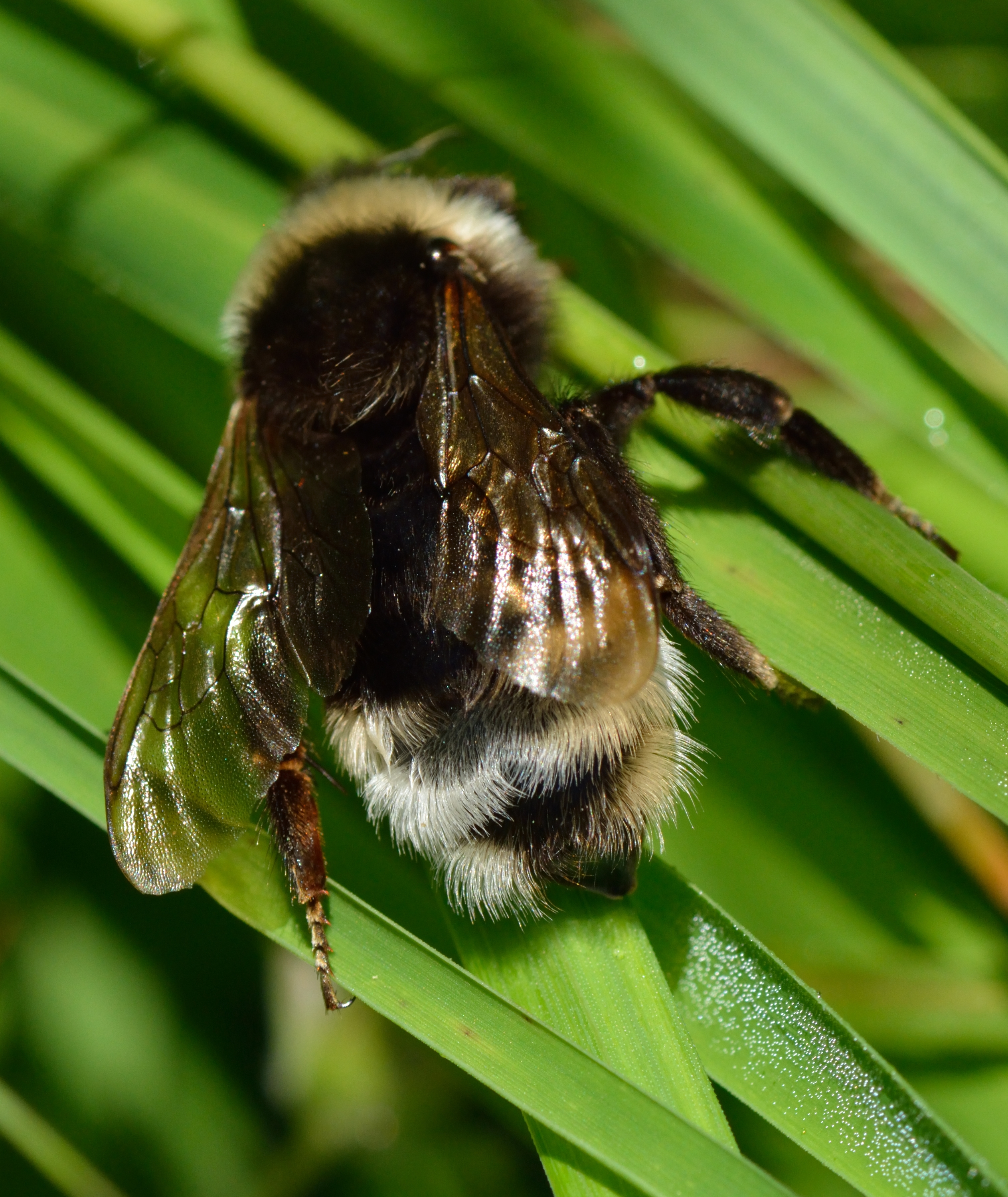|
Psithyrus
Cuckoo bumblebees are members of the subgenus ''Psithyrus'' in the bumblebee genus ''Bombus''. Until recently, the 28 species of ''Psithyrus'' were considered to constitute a separate genus. They are a specialized socially parasitic lineage which parasitises the nests of 'true' bumblebees, resulting in the loss of the ability to collect pollen and establish their own nests. Cuckoo bumblebees do not create a worker caste and produce only male and female reproductives. They are considered inquilines in the colonies of 'true' bumblebees. Cuckoo bumblebee females emerge from hibernation later than their host species to ensure that their host has had sufficient time to establish a nest. Before finding and invading a host colony, a ''Psithyrus'' female feeds directly from flowers until her ovaries are sufficiently developed, at which time she begins seeking a nest to invade. Once she has located and infiltrated a host colony, the ''Psithyrus'' female usurps the nest by killing or su ... [...More Info...] [...Related Items...] OR: [Wikipedia] [Google] [Baidu] |
Bumblebees
A bumblebee (or bumble bee, bumble-bee, or humble-bee) is any of over 250 species in the genus ''Bombus'', part of Apidae, one of the bee families. This genus is the only extant group in the tribe Bombini, though a few extinct related genera (e.g., ''Calyptapis'') are known from fossils. They are found primarily in higher altitudes or latitudes in the Northern Hemisphere, although they are also found in South America, where a few lowland tropical species have been identified. European bumblebees have also been introduced to New Zealand and Tasmania. Female bumblebees can sting repeatedly, but generally ignore humans and other animals. Most bumblebees are social insects that form colonies with a single queen. The colonies are smaller than those of honey bees, growing to as few as 50 individuals in a nest. Cuckoo bumblebees are brood parasitic and do not make nests or form colonies; their queens aggressively invade the nests of other bumblebee species, kill the resident queen ... [...More Info...] [...Related Items...] OR: [Wikipedia] [Google] [Baidu] |
Bumblebee
A bumblebee (or bumble bee, bumble-bee, or humble-bee) is any of over 250 species in the genus ''Bombus'', part of Apidae, one of the bee families. This genus is the only extant group in the tribe Bombini, though a few extinct related genera (e.g., ''Calyptapis'') are known from fossils. They are found primarily in higher altitudes or latitudes in the Northern Hemisphere, although they are also found in South America, where a few lowland tropical species have been identified. European bumblebees have also been introduced to New Zealand and Tasmania. Female bumblebees can sting repeatedly, but generally ignore humans and other animals. Most bumblebees are social insects that form colonies with a single queen. The colonies are smaller than those of honey bees, growing to as few as 50 individuals in a nest. Cuckoo bumblebees are brood parasitic and do not make nests or form colonies; their queens aggressively invade the nests of other bumblebee species, kill the resident queen ... [...More Info...] [...Related Items...] OR: [Wikipedia] [Google] [Baidu] |
Bumblebee
A bumblebee (or bumble bee, bumble-bee, or humble-bee) is any of over 250 species in the genus ''Bombus'', part of Apidae, one of the bee families. This genus is the only extant group in the tribe Bombini, though a few extinct related genera (e.g., ''Calyptapis'') are known from fossils. They are found primarily in higher altitudes or latitudes in the Northern Hemisphere, although they are also found in South America, where a few lowland tropical species have been identified. European bumblebees have also been introduced to New Zealand and Tasmania. Female bumblebees can sting repeatedly, but generally ignore humans and other animals. Most bumblebees are social insects that form colonies with a single queen. The colonies are smaller than those of honey bees, growing to as few as 50 individuals in a nest. Cuckoo bumblebees are brood parasitic and do not make nests or form colonies; their queens aggressively invade the nests of other bumblebee species, kill the resident queen ... [...More Info...] [...Related Items...] OR: [Wikipedia] [Google] [Baidu] |
Bombus Bohemicus
''Bombus bohemicus'', also known as the gypsy's cuckoo bumblebee, is a species of socially parasitic cuckoo bumblebee found in most of Europe with the exception of the southern Iberian Peninsula and Iceland. ''B. bohemicus'' practices inquilinism, or brood parasitism, of other bumblebee species. ''B. bohemicus'' is a generalist parasite, successfully invading several species from genus ''Bombus''. The invading queen mimics the host nest's chemical signals, allowing her to assume a reproductively dominant role as well as manipulation of host worker fertility and behavior. Taxonomy and phylogeny ''B. bohemicus'' is part of the order Hymenoptera, which includes ants, bees, wasps, and sawflies, the family ''Apidae'', specific to bees, and the genus ''Bombus'', which includes all bumblebees. ''B. bohemicus'' belongs to the subgenus ''Psithyrus'', or the cuckoo bees, which includes 29 species found in Europe and the New World. Species in this subgenus are obligate parasites of other ... [...More Info...] [...Related Items...] OR: [Wikipedia] [Google] [Baidu] |
Bombus Citrinus
''Bombus citrinus'' is a species of bumblebee known commonly as the lemon cuckoo bumblebee due to its lemon-yellow color. It is native to eastern North America.Hatfield, R., et al. 2014''Bombus citrinus''.The IUCN Red List of Threatened Species. Downloaded on 04 March 2016. This is a cuckoo bumblebee, one that invades the colonies of other bumblebees, kills the resident queen, and takes control over the population of workers inside. Host bees for this species include the common eastern bumblebee (''Bombus impatiens'') and the half-black bumblebee ('' B. vagans''). Before the queen invades a nest she forages on various plants, such as asters, thistles, snakeroots, blazing-stars, mountain-mints, and goldenrods. Phylogeny ''Bombus citrinus'' belongs to the parasitic ''Bombus'' subgenus ''Psithyrus''. A previous classification had ''Psithyrus'' listed as its own genus, and so this species used to be identified as ''Psithyrus citrinus''. Members of ''Psithyrus'' are distinguis ... [...More Info...] [...Related Items...] OR: [Wikipedia] [Google] [Baidu] |

_pristinus.jpg)

